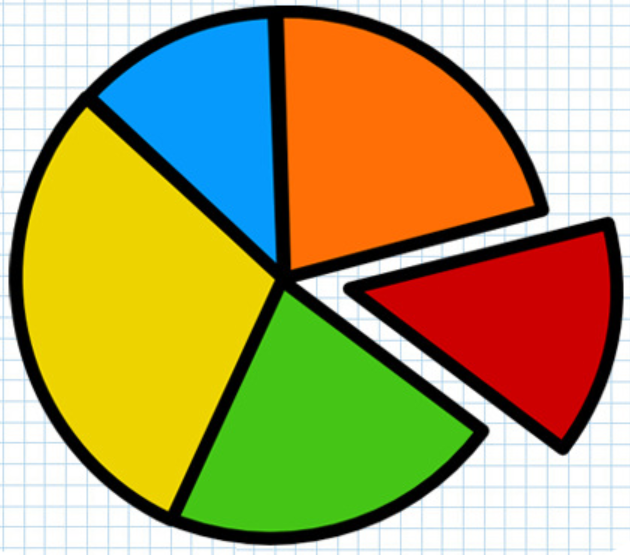Fractions are an essential part of mathematics and everyday life, helping us understand and manage quantities that aren’t whole numbers. Whether you’re dividing a pizza among friends or measuring ingredients for a recipe, fractions come into play. This blog post will guide you through the basics of fractions, including their types, operations, and practical applications, ensuring you have a comprehensive understanding.
What is a Fraction?
A fraction represents a part of a whole or, more generally, any number of equal parts. It is composed of two parts: a numerator and a denominator. The numerator, the top number, indicates how many parts you have. The denominator, the bottom number, shows how many parts make up a whole.

Types of Fractions
- Proper Fractions: The numerator is less than the denominator (e.g., 1/2, 3/4).
- Improper Fractions: The numerator is greater than or equal to the denominator (e.g., 5/3, 7/4). These often represent more than one whole.
- Mixed Numbers: These are made up of a whole number and a proper fraction (e.g., 2 1/2, 3 3/4).
- Unit Fractions: These have a numerator of 1, indicating one part of the whole (e.g., 1/3, 1/5).
Simplifying Fractions
Simplifying (or reducing) fractions means rewriting them with the smallest possible numerator and denominator. This involves dividing both the numerator and the denominator by their greatest common divisor (GCD). For example, the fraction 8/12 can be simplified by recognizing that both 8 and 12 can be divided by 4, their GCD, resulting in 2/3.
Adding and Subtracting Fractions
To add or subtract fractions, they must have a common denominator. If they don’t, you’ll need to find the least common multiple (LCM) of the denominators and convert each fraction:
- Identify the LCM of the denominators.
- Convert each fraction to have this common denominator by multiplying both the numerator and the denominator by the necessary values.
- Add or subtract the numerators, keeping the denominator the same.
For example, to add 1/4 and 1/6:
- The LCM of 4 and 6 is 12.
- Convert 1/4 to 3/12 and 1/6 to 2/12.
- Add the numerators: 3/12 + 2/12 = 5/12.
Multiplying and Dividing Fractions
Multiplying fractions is straightforward:
- Multiply the numerators together to get the new numerator.
- Multiply the denominators together to get the new denominator.
- Simplify the result if possible.
For instance, multiplying 1/4 by 1/2 gives 1/8, since 1×1=1 and 4×2=8.
Dividing fractions involves flipping the second fraction (taking its reciprocal) and then multiplying:
- Take the reciprocal of the divisor fraction.
- Multiply as usual.
- Simplify the result.
For example, to divide 1/4 by 1/2, flip 1/2 to get 2/1 and multiply: 1/4 x 2/1 = 2/4, which simplifies to 1/2.
Decimal and Fraction Conversions
Converting between decimals and fractions is a common requirement. To convert a decimal to a fraction:
- Count the decimal places.
- Place the decimal number over its corresponding place value (e.g., 0.75 becomes 75/100).
- Simplify the fraction if possible (75/100 simplifies to 3/4).
To convert a fraction to a decimal, divide the numerator by the denominator using long division or a calculator.
Practical Applications of Fractions
Fractions are everywhere around us:
- Cooking and Baking: Recipes often require half a cup or a quarter teaspoon of ingredients.
- Construction and Crafting: Measurements frequently need to be made in fractions of an inch or centimeter.
- Budgeting and Finance: Managing money often involves calculations with fractions, such as determining interest or splitting bills.
Learning and Teaching Fractions
For students and educators, understanding fractions is crucial. Teaching fractions effectively involves using visual aids, such as pie charts or fraction bars, and real-world examples to make the concepts tangible.
Challenges in Learning Fractions
Many students struggle with fractions because they represent abstract concepts that differ from whole numbers. Challenges often arise in operations involving fractions, particularly when moving to algebraic expressions that incorporate them. Fraction worksheets can be very helpful to explain and practice fractions. You can find various types of fraction worksheet generators on our site.